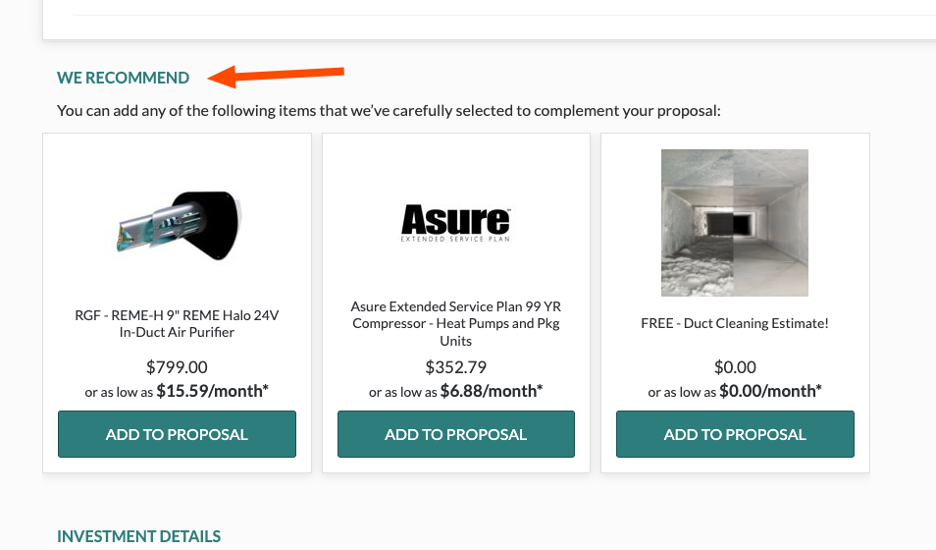When it comes to HVAC replacement sales, there’s no shortage of opinion and advice about the best way to win the job. For decades, the conventional wisdom has centered around the “good-better-best” sales process.
There are certainly good reasons for the popularity of this technique — and we will explore some of those reasons below. But, sometimes there is much more to a sales strategy beyond the conventional industry wisdom.
Adapt your HVAC sales technique to your customers’ unique situation.
Let’s take a look at a few alternative ways to think about your sales techniques. Spoiler alert: you won’t hear us say, “This is the best way to sell!” We have worked with many successful HVAC contractors who have many different ways of closing sales.
Rather, our goal is to help you learn tips that you can apply in a variety of scenarios to help you grow your business.
Blame it on Beer

Selling by offering good-better-best options is not unique to HVAC. In fact, the concept gained popularity after an experiment conducted by an MIT professor who spent time at a bar in the Boston area.
Patrons of the bar were typically offered two beer options: a basic beer, and a better beer. 15% of patrons chose the basic beer, and 85% chose the better option.
As an experiment, the bar introduced a third option: a premium. When the third option was introduced, he observed 10% of customers chose the premium option, and the percentage that chose the basic option went down, by 5%.
So the effect of introducing a premium option has a positive impact not just by selling a higher value beer, but also by moving more people away from the basic beer.
This resulted in the key observation: presenting a third choice caused more people to shift their preference to a higher value option, thereby netting the bar higher overall sales.
This experiment has been replicated in sales departments across all types of industries, from grocery stores to software to automobiles…and, of course, in HVAC selling.
As you think about good-better-best selling in your own HVAC business, it’s important to keep in mind a few things:
- Logical Comparisons
Make sure the differences between your three options are logical. Jumping from one option with a drastic difference in price will not have the same results. - Be Flexible
The basic option doesn’t need to be the cheapest product you offer. For instance, you may have a basic option that starts at a 16 SEER system. It all depends on your discovery and understanding of your customer! So be flexible and adjust your offerings based on what you know about your customer and their needs. - Test…even with 4 Options!
We observe customers using OnCall Air to test a variety of techniques, whether it’s 2 options, 3 options or even 4 options side-by-side. Each of these may have different results, and of course depend on your objectives and your customer needs.
The Decoy Option
Let’s take a look at that “fourth option” in more detail.
Introducing more options in your sales proposals often does not have the effect of actually selling more of those options. Instead, introducing a more “extreme” option at either end of the spectrum can shift consumer preference of the other options.
How could this work with a set of Amana options? We’ll use an example using an OnCall Air proposal to illustrate the choices.

Let’s assume that 10% of your customers choose the 18 SEER, 60% choose the 16 SEER, and 30% end up with the 14 SEER.
Now, let’s introduce a higher priced “decoy”, a fantastic option:

Based on the psychology of selling, you can expect that a small percentage of your customers, say 3%, will select the Fantastic option. Great!
But the bigger impact is that now the customer is pulled further to the left. The science says that more customers will select the Best option, and even more will be pushed from the Good option to the Better option.
As you can imagine, this technique, if applied properly, can have a profound impact on your sales mix!
We recommend the book “Priceless: The Myth of Fair Value” for more about the psychology and science of selling with options.
The Paradox of Choice

Now, if 4 choices is better than 3, then why not offer 5 choices? And how about 6, 7, or 8?
Well of course, there is a limit to how this technique might work, and that’s explained in fascinating detail in this TED talk by Barry Schwarz, who wrote a book called “The Paradox of Choice.”
The key idea that Mr. Schwarz brings to light is that people can easily be overwhelmed by too many choices, causing them to not select anything.
With a purchase as complex as an HVAC system, it’s easy to see how a consumer could also be overwhelmed by too many choices.
What’s an HVAC contractor to do?
What we have found at OnCall Air is that there is a balance. On average, when analyzing more than 200,000 proposals, the average number of options presented was 2.1. So, certainly not all contractors are offering 4 options all the time, and most are typically offering more than 1 option.
The answer depends. It depends on your product lines. It depends on your team. Most importantly, it depends on understanding your customer. It depends on understanding the techniques and some of the science — along with testing your ideas with real customers — will help you develop the best selling strategy for your business.
Here are a few tips that we think will help your sales regardless of how many choices you offer:
Recommendations as Choices
In many systems, such as OnCall Air, you can offer specific recommended products to your customer inside one of more of your choices.
So, instead of thinking about the choices you offer as “side-by-side”, remember that you can also offer upgrades and add-on choices that your customer can add once they have selected an option. This is a popular technique and can lead to improved average ticket value as well:

Financing Before Price
In all cases, discussing the value of your services and discovering the needs of your customer should happen before you present prices.
Presenting monthly financed prices can help your customer more effectively compare different options. This helps them think in terms of monthly budget, and makes the comparisons between different proposal options less extreme.
Personalization
Using tools to personalize the choices is another powerful option. Instead of using generic “good-better-best”, you can offer more guidance to your customer by using custom — and fun — labels.
The image below shows an example of using financing options to simplify the price comparisons, and an example of custom choice labels at the top:

Finally, make sure that what makes your company and your service unique stands out throughout your selling process.
In the end, you don’t need science to know that people buy from people they trust!

